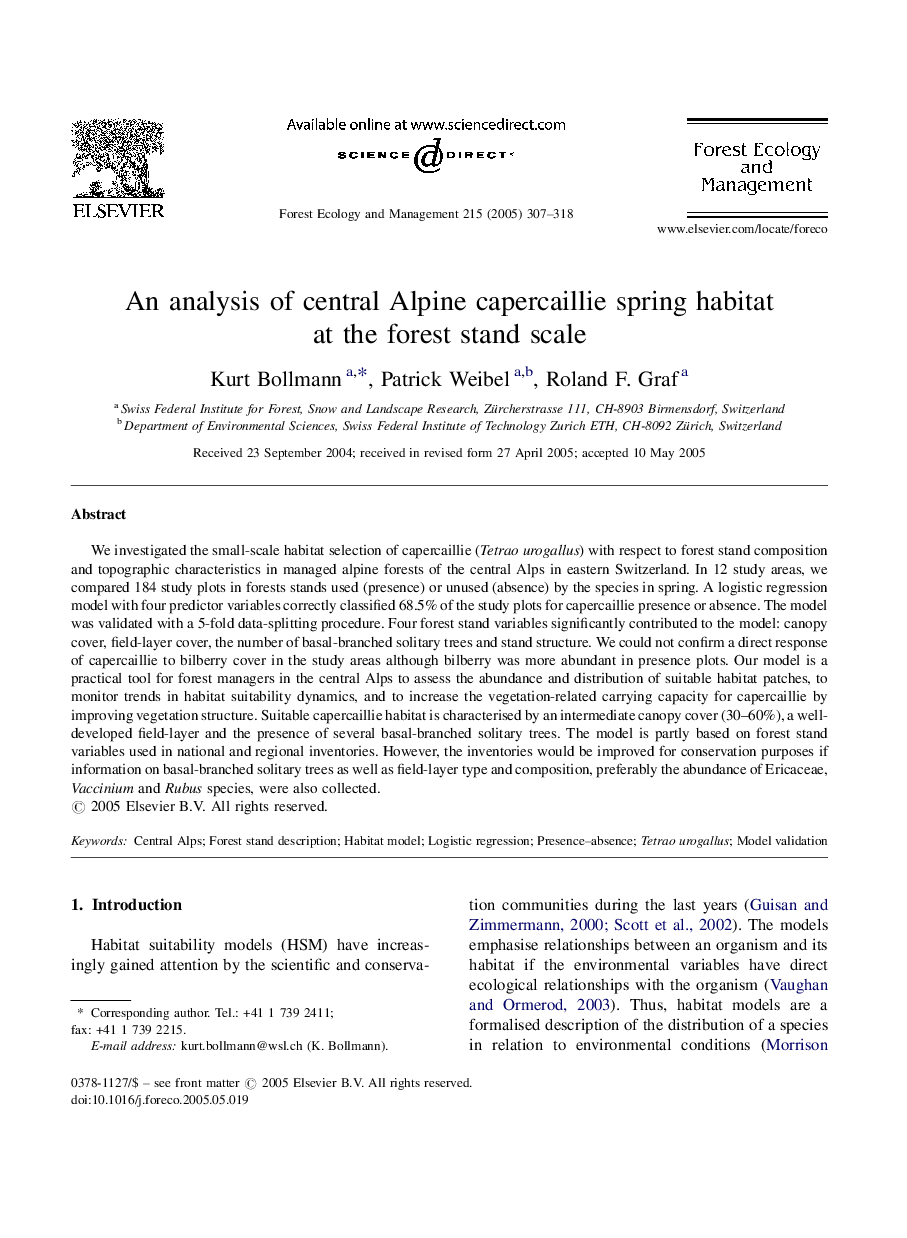| Article ID | Journal | Published Year | Pages | File Type |
|---|---|---|---|---|
| 9620216 | Forest Ecology and Management | 2005 | 12 Pages |
Abstract
We investigated the small-scale habitat selection of capercaillie (Tetrao urogallus) with respect to forest stand composition and topographic characteristics in managed alpine forests of the central Alps in eastern Switzerland. In 12 study areas, we compared 184 study plots in forests stands used (presence) or unused (absence) by the species in spring. A logistic regression model with four predictor variables correctly classified 68.5% of the study plots for capercaillie presence or absence. The model was validated with a 5-fold data-splitting procedure. Four forest stand variables significantly contributed to the model: canopy cover, field-layer cover, the number of basal-branched solitary trees and stand structure. We could not confirm a direct response of capercaillie to bilberry cover in the study areas although bilberry was more abundant in presence plots. Our model is a practical tool for forest managers in the central Alps to assess the abundance and distribution of suitable habitat patches, to monitor trends in habitat suitability dynamics, and to increase the vegetation-related carrying capacity for capercaillie by improving vegetation structure. Suitable capercaillie habitat is characterised by an intermediate canopy cover (30-60%), a well-developed field-layer and the presence of several basal-branched solitary trees. The model is partly based on forest stand variables used in national and regional inventories. However, the inventories would be improved for conservation purposes if information on basal-branched solitary trees as well as field-layer type and composition, preferably the abundance of Ericaceae, Vaccinium and Rubus species, were also collected.
Keywords
Related Topics
Life Sciences
Agricultural and Biological Sciences
Ecology, Evolution, Behavior and Systematics
Authors
Kurt Bollmann, Patrick Weibel, Roland F. Graf,
